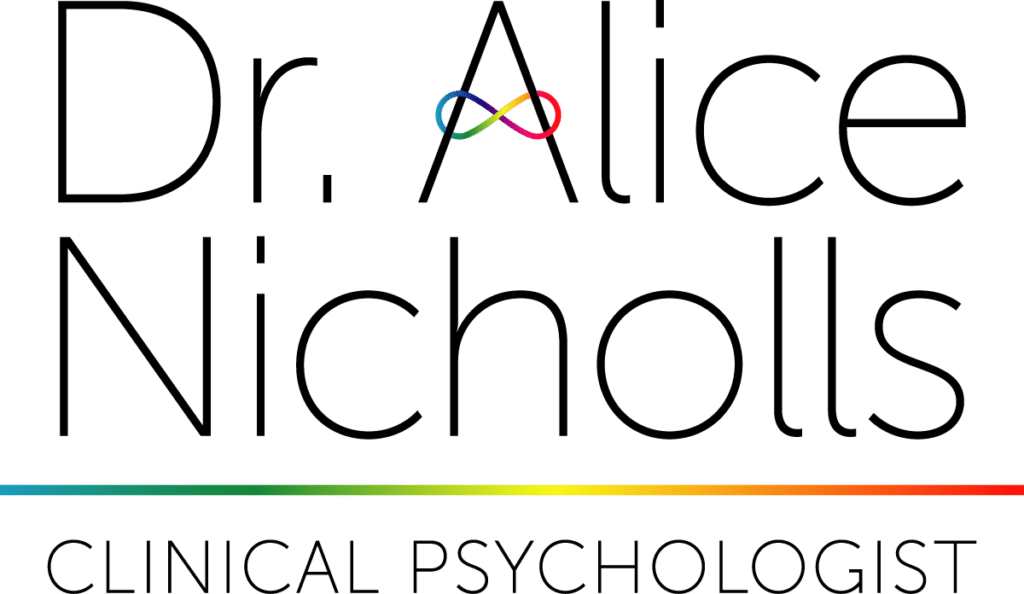In Autistic Burnout people are often overwhelmed by the sheer number of jobs on their to-do list each day.
I work with people in various stages of recovery from Autistic Burnout via online courses and communities. A concept that a continues to be helpful in my communities (and indeed my own life) is that of minimum standards.
In this article I will:
- Define minimum standards
- Discuss how they can be helpful
- Give you some tips for using minimum standards in your own life
Defining minimum standards
When I talk about minimum standards I am talking about the absolute bare minimum you need to do each day to:
- Survive
- Do the things you really need to do
- (not essential but ideal) Not make tomorrow harder than it needs to be
They are personal to you and very much dependent on individual circumstances e.g:
- Energy levels
- What you are currently finding difficult
- Support (emotional, practical and financial)
- Responsibilities
- Financial situation
- Health
- Values and priorities
How minimum standards can help
It’s easy to get very caught up or trapped in long lists of things we need to do, should do, would like to do or are expected of us.
Often there is a mismatch between our current expectations of ourselves and what we are able to do.
We may be continuing to push ourselves through exhaustion to do things that are not entirely necessary.
This is often at the expense of doing things that might help replenish us (including, but definitely not limited to resting).
This might be because these jobs would ideally be done if we were feeling well.
We may have committed to them, or got into the habit of doing them at a time when we had more energy and felt well in ourselves.
When we are in Autistic Burnout it can be really hard to re-assess existing routines, we often don’t have the cognitive capacity to unpick all of our existing routines and re-evaluate how we are spending our energy.
This can leave us stuck with a set of standards for ourselves that doesn’t suit our current situation, but that we feel powerless to change.
Minimum standards as a concept helps us to cut out some of that noise and start to consider what the bare minimum we can get away with doing is.
Hopefully applying minimum standards will help you to save some energy, rest more and have a little more space in your day for doing things you find enjoyable and regulating all of which will help you to recover.
How to apply minimum standards in your own life
- Don’t try to make an exhaustive list of all the things you need to do each day. This is likely to stress you out, and there are likely somethings that you are doing that you are not struggling with that don’t need to be written down or added to a mental list. For example if you don’t struggle to brush your teeth, shower or eat three meals a day, then this does not need to go on the list. However, if you are struggling to eat regularly, this would be a good thing to put on your list.
- Practice asking yourself what is the bare minimum I need to do today? What this is for you is your decision, you might, for example decide that the bare minimum for that day is to eat two meals.
- Focus on tasks essential to survival of you and anyone dependent on you first. E.g. eating, drinking, keeping safe.
- Check that anything you are adding to your list really is essential. It can be helpful to ask ‘what would happen if I didn’t do it’ to help determine how essential it really is.
- If it is essential, could it be simplified, made easier or could someone else support you with it? For example, could someone else cook dinner, could one of those meals be cereal, a ready meal, a meal replacement shake?
- If you feel like you are managing the basic survival tasks of the day but struggling with other responsibilities such as laundry, making drs appointments, paid work or childcare, again ask yourself what is the minimum you need to do each day in these areas? This might involve thinking more broadly, over the course of a week. For example, if you get easily overwhelmed by laundry, you might put in a minimum standard of one load per day.
- This strategy can be used at different stages of recovery in different ways, for example if you have a large to-do list at work and are feeling overwhelmed, you might ask yourself ‘what’s the bare minimum I need to do today’
- Be prepared for this list to change, regularly, the ‘bare minimum’ is rarely static, and may naturally rise as you start to recover, but it may also need revisiting if you are still feeling exhausted.
- If you are deep in burnout, then the bare minimum might be all you can manage each day.
- Ideally, doing the bare minimum will leave you with some energy left, If you are deep in burnout, prioritise using some of this energy for regulating activities and save some where you can, to help to re-build your reserves.
- As you recover you may like to consider adding a ‘nice to do’ list as an optional add on, if you still have some capacity left when you have done the bare minimum.
- Try to use minimum standards as an exercise in self-compassion. Talking to yourself about the bare minimum, in the same way you might if you were talking to someone you cared about who was struggling.
If you would like some help thinking about your own minimum standards and how you might use them in your recovery from Autistic Burnout you would be very welcome to join Basecamp where we frequently have discussions about this in our online community.
I am an Autistic Clinical Psychologist specialising in Autistic Burnout if you would like to know more about my work please check out my:
- Mailing list community for people who want to receive helpful information and resources about Autistic Burnout.
- Free short course on How to Break the Cycle of Autistic Burnout (link goes straight to registration page)
- Authenticity Basecamp: A 90 day support programme for people in the early stages of recovering from Autistic Burnout who want to get calmer, clearer and more supported.
- Authenticity: The Course and Community: For late-realised, high-masking Autistic adults who want to build more sustainable, authentic lives and break free of the cycle of Autistic Burnout for good.









